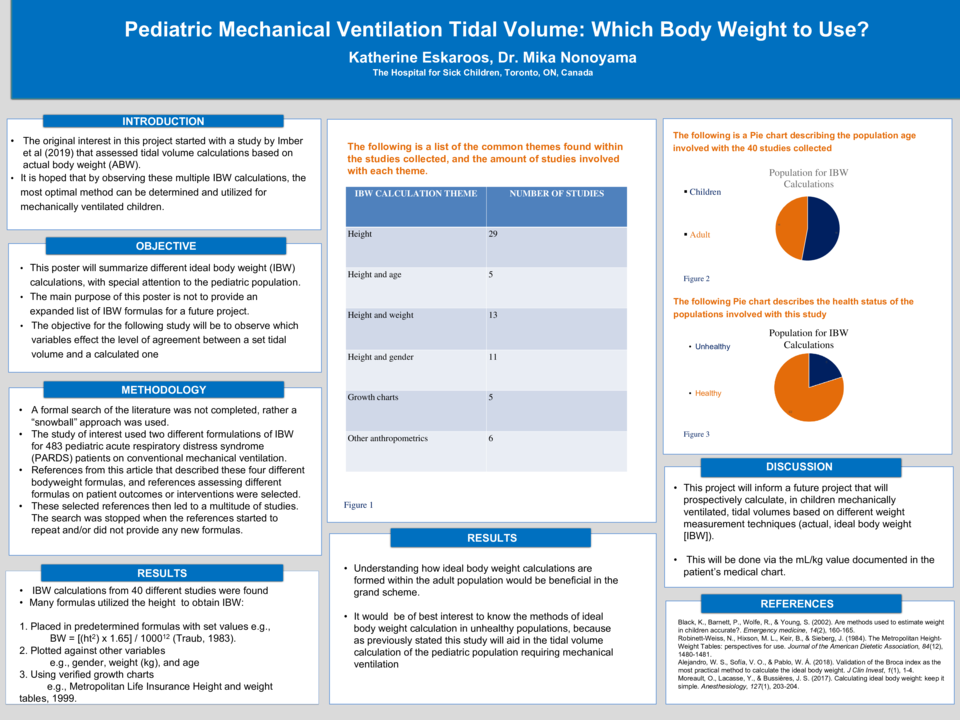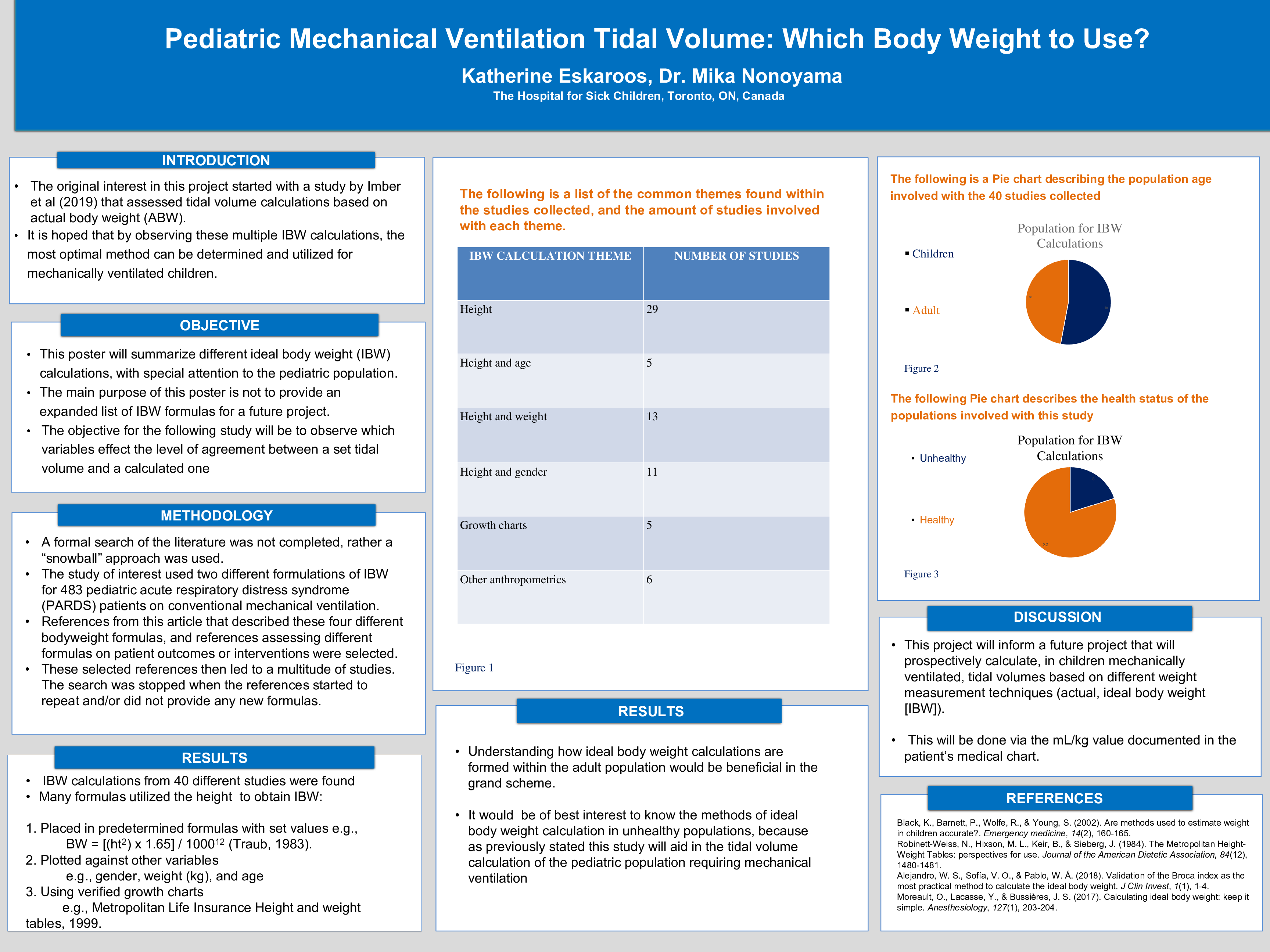Abstract
Introduction
This paper will summarize different ideal body weight (IBW) calculations, with special attention to the pediatric population. The main purpose of this paper is not to provide an exhaustive description of body weight calculations, but to provide an expanded list of IBW formulas for a future project. It is hoped that by observing these multiple IBW calculations, the most optimal method can be determined and utilized to calculate the most favorable tidal volumes for mechanically ventilated children.
Methods
A formal search of the literature was not completed, rather a “snowball” approach was used. The original interest in this project started with a study by Imber et al (2019) that assessed tidal volume calculations based on actual body weight (ABW) and two different formulations of IBW for 483 pediatric acute respiratory distress syndrome (PARDS) patients on conventional mechanical ventilation. References from this article that described these four different bodyweight formulas, and references assessing different formulas on patient outcomes or interventions were selected. These selected references then led to more and more studies. The search was stopped when the references started to repeat and/or did not provide any new formulas.
Results
A collection of IBW calculations were summarized in a table and what was found is that many formulas utilized the height of the individuals to obtain this value. Height was placed in predetermined formulas with set values, for example, IBW = [(ht^2) x 1.65] / 1000^12 (Traub, 1983). Height was also plotted against various other variables such as gender, weight (kg), and age. This was done via previously made and verified growth charts where the variables were plotted, or it was done through a formula. For example, the Metropolitan Life Insurance Height and weight tables predict ideal body weight by plotting height in centimeters against weight in kg (Metropolitan Life Insurance Height and weight tables, 1999). Also, the Rohr study utilized the formula mass/Height^3 (Rohr, 1921). Growth charts were also used with various other variables, for example, the Freeman study used to weight in kilograms and plotted it against age in months to calculate ideal body weight (Freeman, 1990). The majority of the studies included in this search had a pediatric population, however, some of the calculations found were aimed toward adults. Additionally, the population these studied were healthy populations with only eight articles assessing an unhealthy population.
Discussion
This project will inform a future project that will prospectively calculate, in children mechanically ventilated, tidal volumes based on different weight measurement techniques (actual, ideal body weight [IBW]): this will be done by using the mL/kg value documented in the patient’s medical chart. The level of agreement between these calculated tidal volumes and the set tidal volume will also be determined. The secondary objective will be to determine which variable(s) affect the level of agreement between calculated tidal volumes and the set tidal volume.





